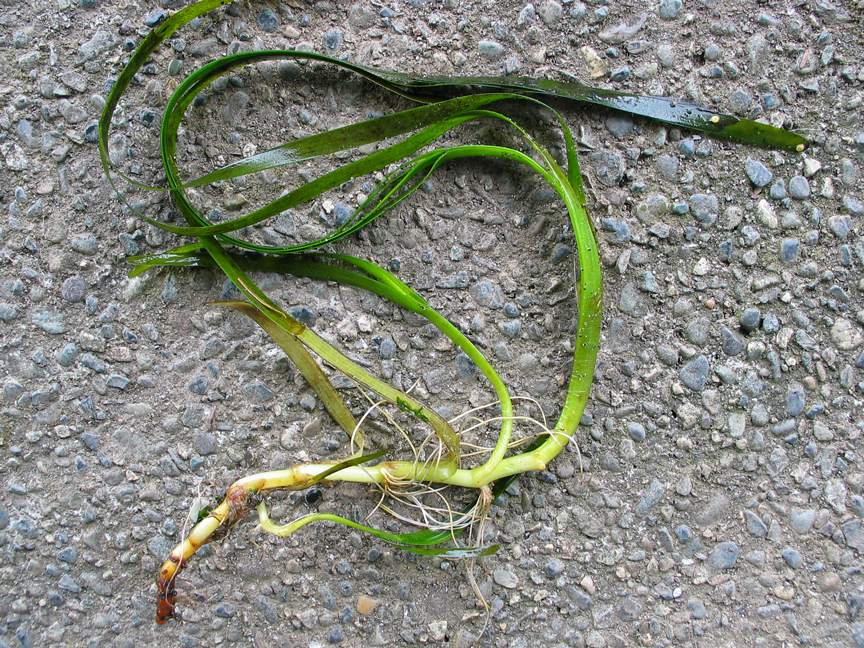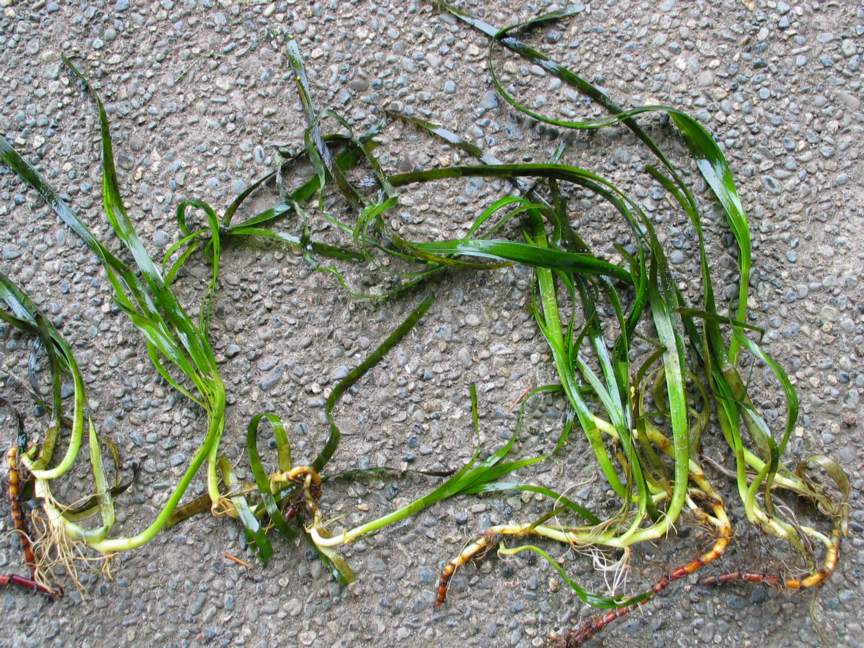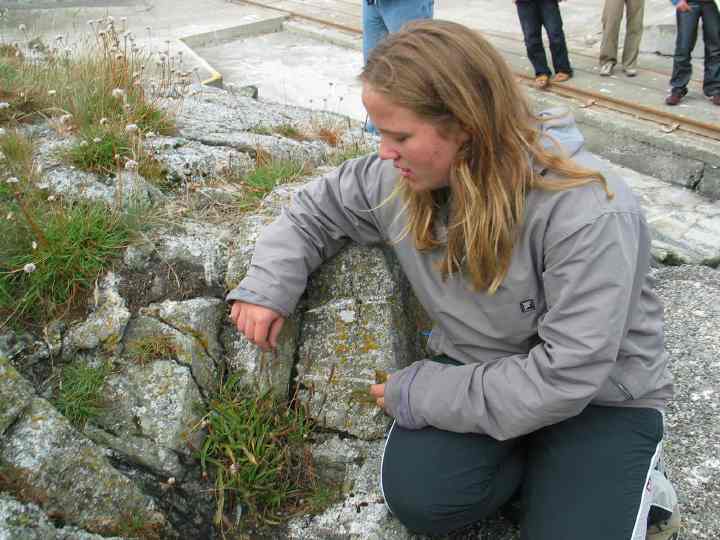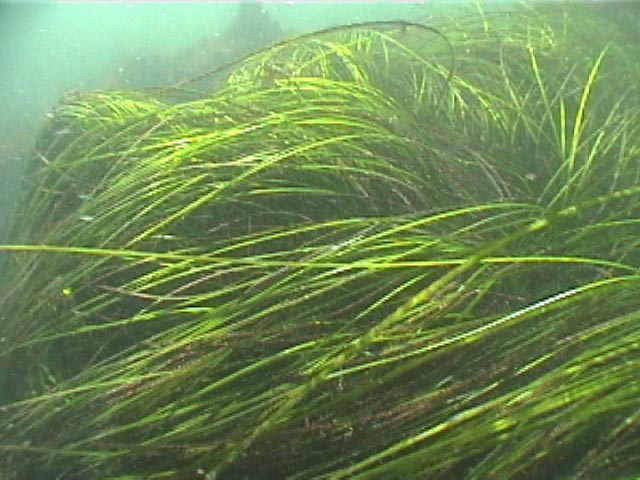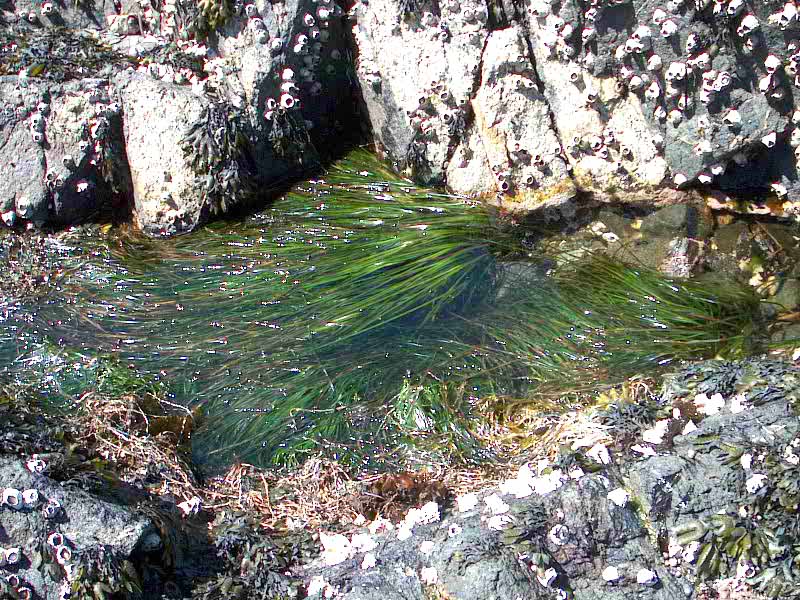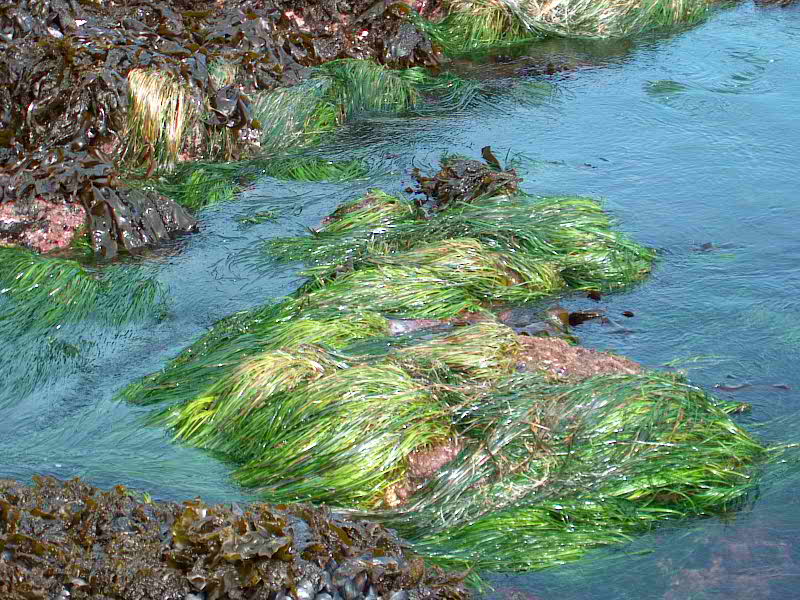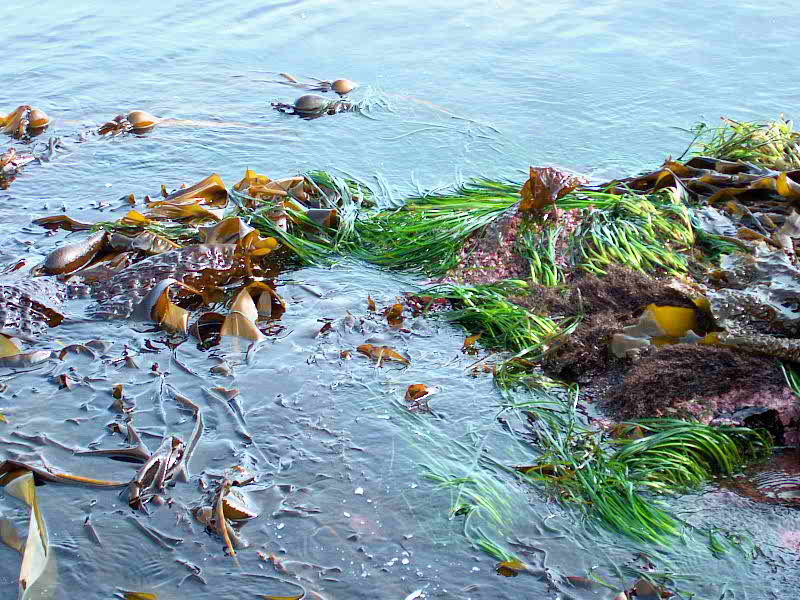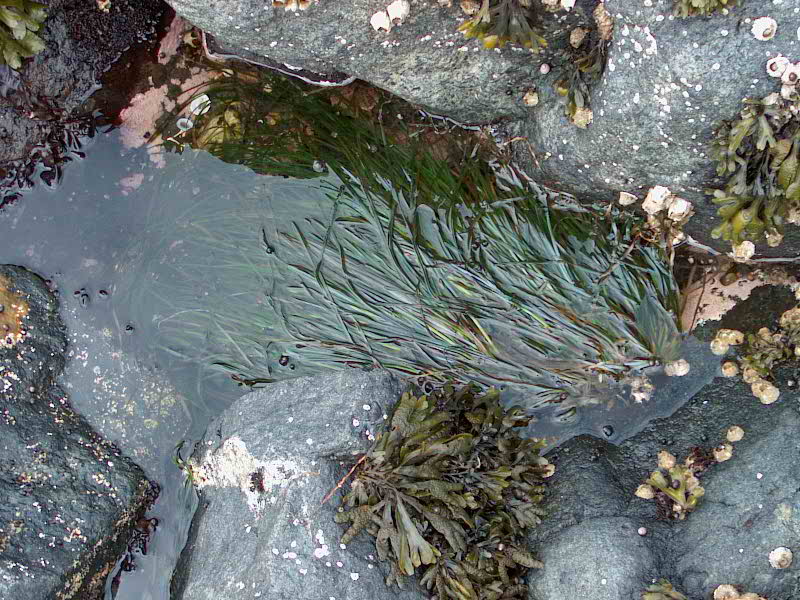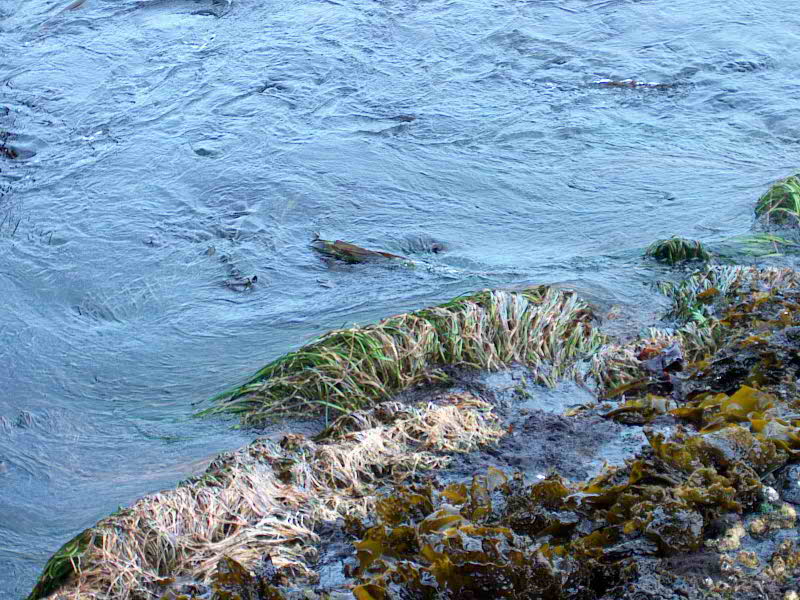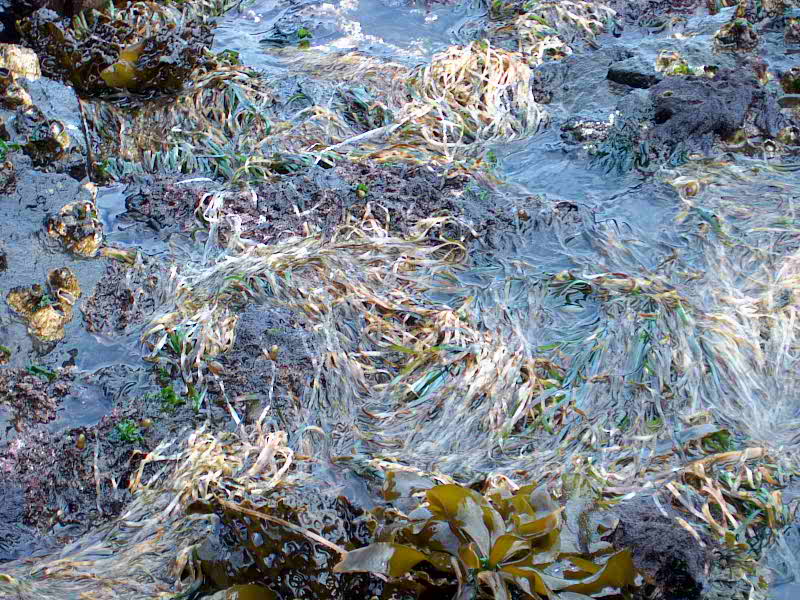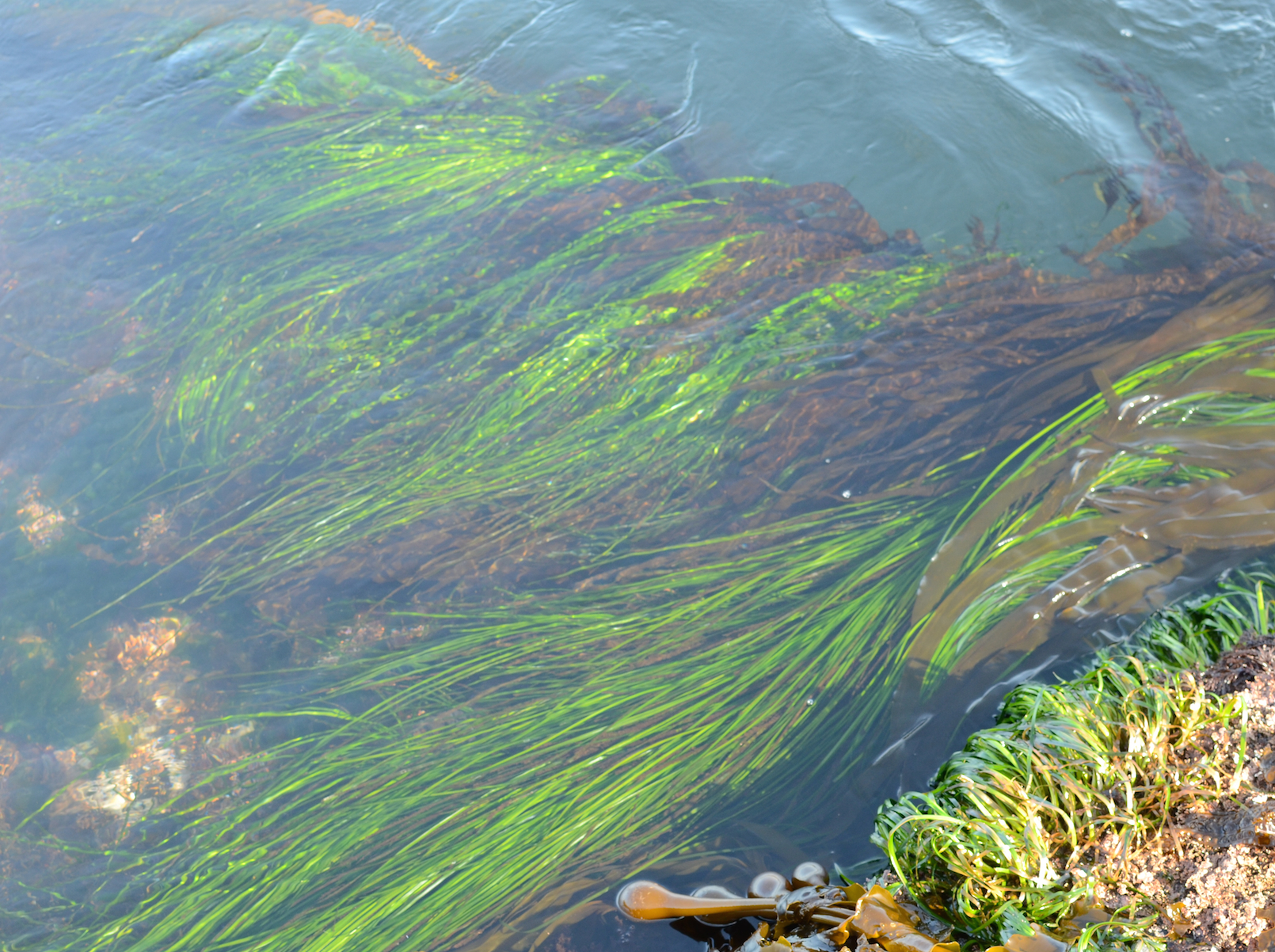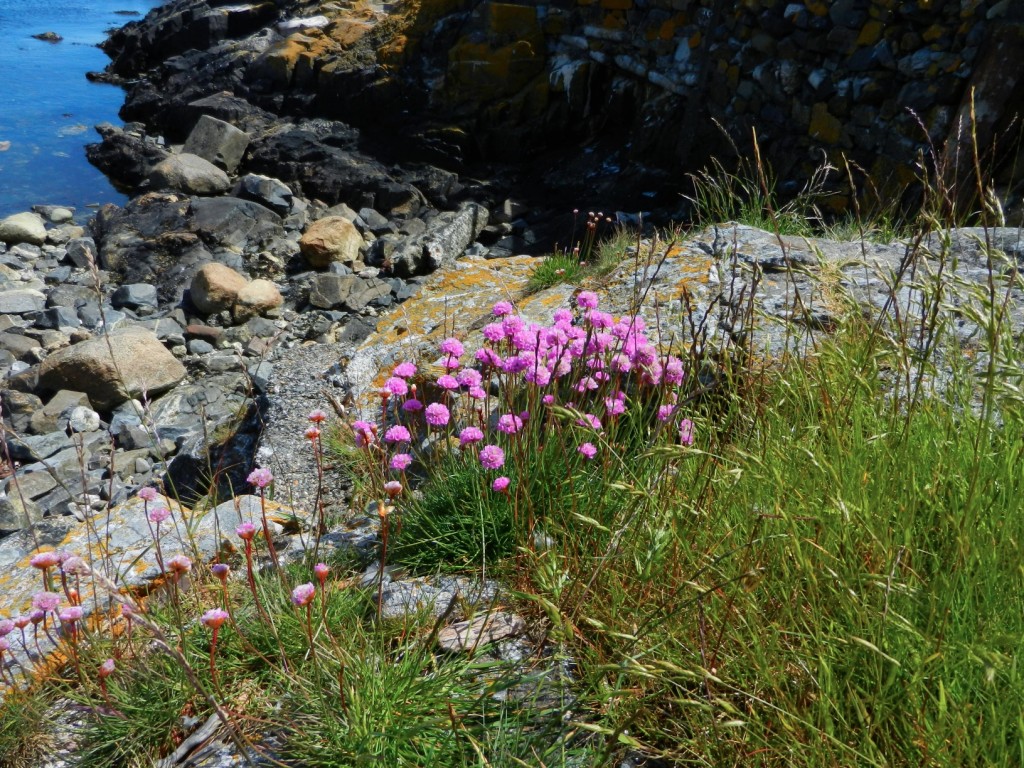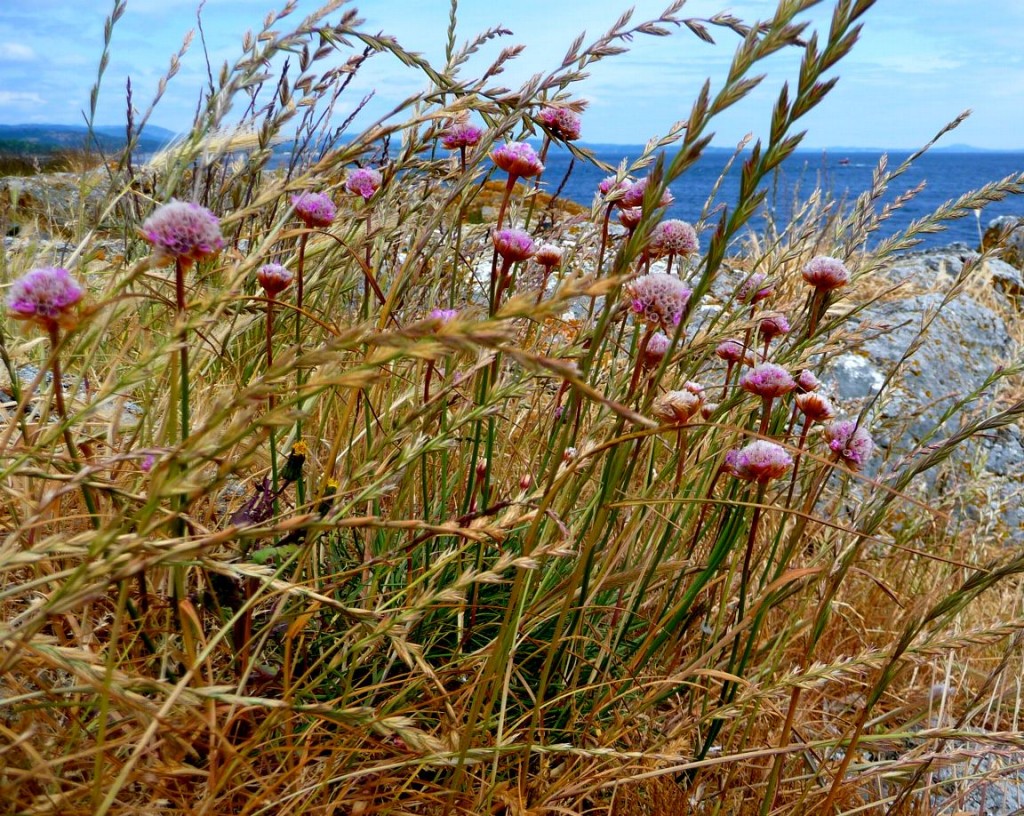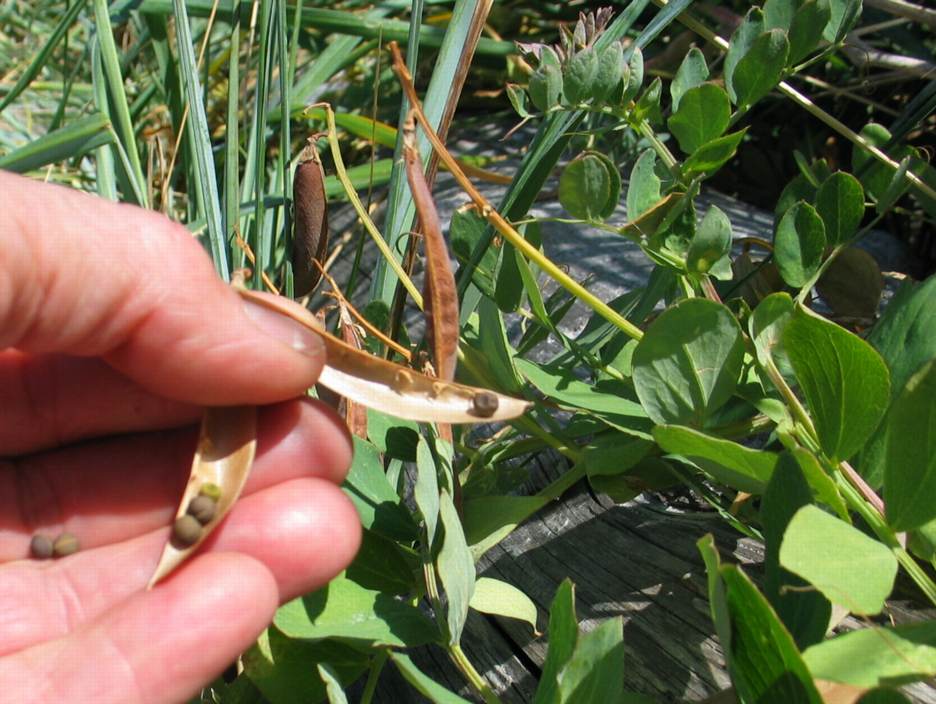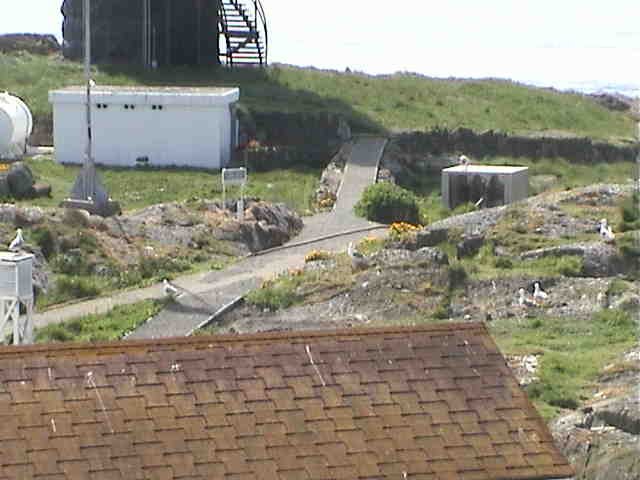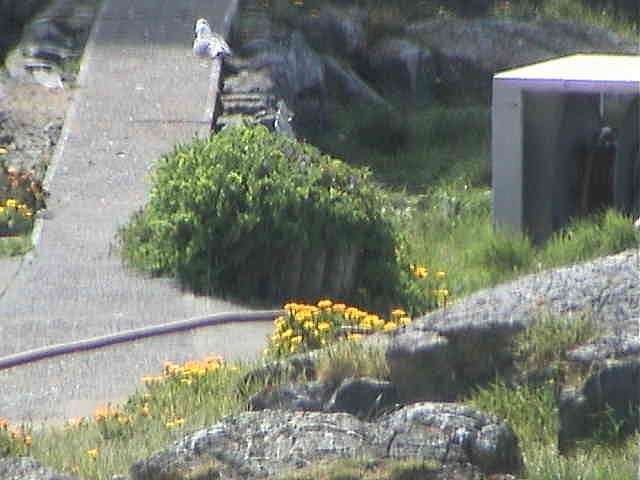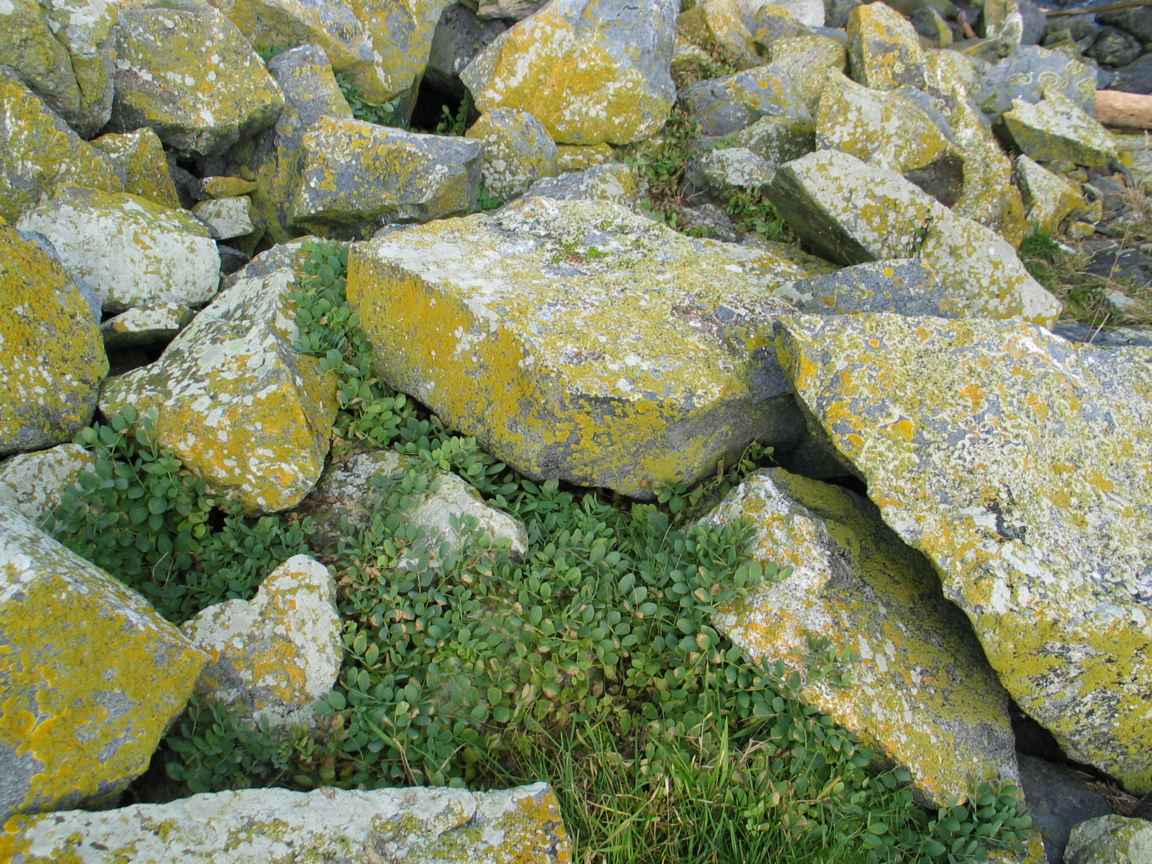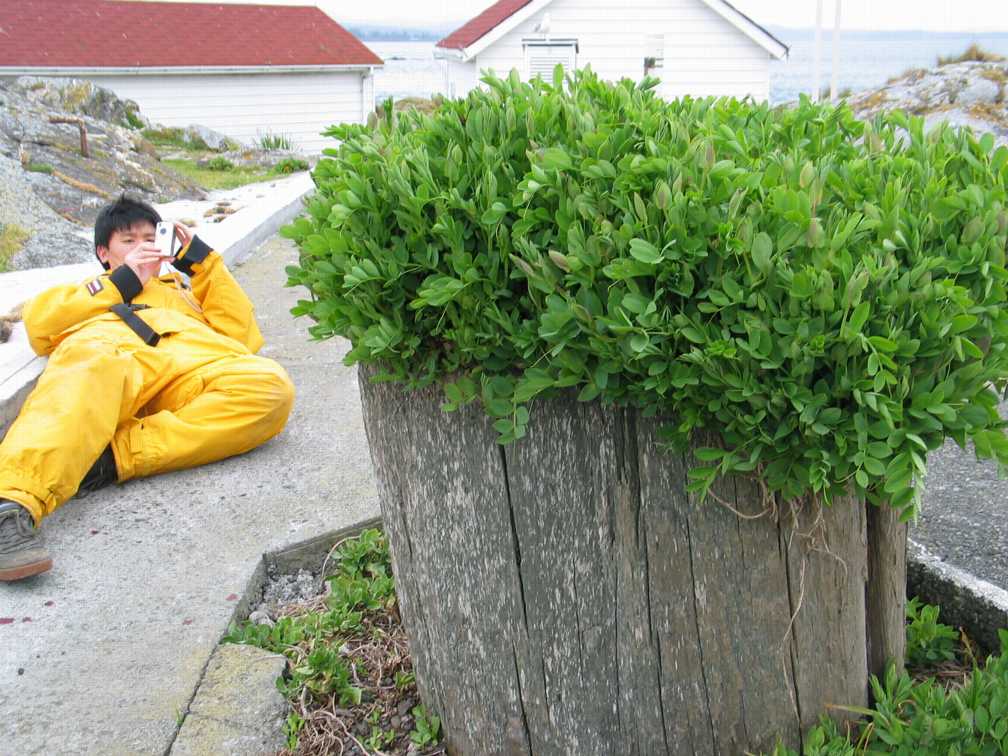- Zostera picked up from the beach after an April storm
- Several eel grass plants,each showing Rhizome and rootlets at intervals.
This true sea grass, is not an algae, but a flowering plant. It does have a close relative, the other sea grass Phyllospadix scouleri which does live at Race Rocks. We have included it here because it often ends up on the small pocket beach areas as drift along marine algae and logs. So technically its energy is imported into the Race Rocks Ecosystem with the help of storms. It actually grows in shallow offshore areas in a sand sediment bottom. The closest to Race Rocks is around Bentinck Island and in Emdyck Passage
Asexual Reproduction: In the photos you can see that it grows on a sediment substrate and has creeping roots or rhizomes just below the surface. They serve as its main method of propagation. It also can produce seeds from small inconspicuous flowers. A bed of this grass may be closely related genetically as it is joined by a network of these rhizomes underground.
Domain Eukarya
Kingdom: Plantae
Clade: Tracheophytes
Clade: Angiosperms
Clade: Monocots
Order: Alismatales
Family: Zosteraceae
Genus: Zostera
Species: marina
Common Name: Eel Grass
| Other Members of the Angiosperms at Race Rocks |
and Image File |
 The Race Rocks taxonomy is a collaborative venture originally started with the Biology and Environmental Systems students of Lester Pearson College UWC. It now also has contributions added by Faculty, Staff, Volunteers and Observers on the remote control webcams. The Race Rocks taxonomy is a collaborative venture originally started with the Biology and Environmental Systems students of Lester Pearson College UWC. It now also has contributions added by Faculty, Staff, Volunteers and Observers on the remote control webcams.
name –year (PC) |

